Illustrating The American Dream with Conner Ives
Explore wunderkind Ives' mythic visions of a modern USA through fashion
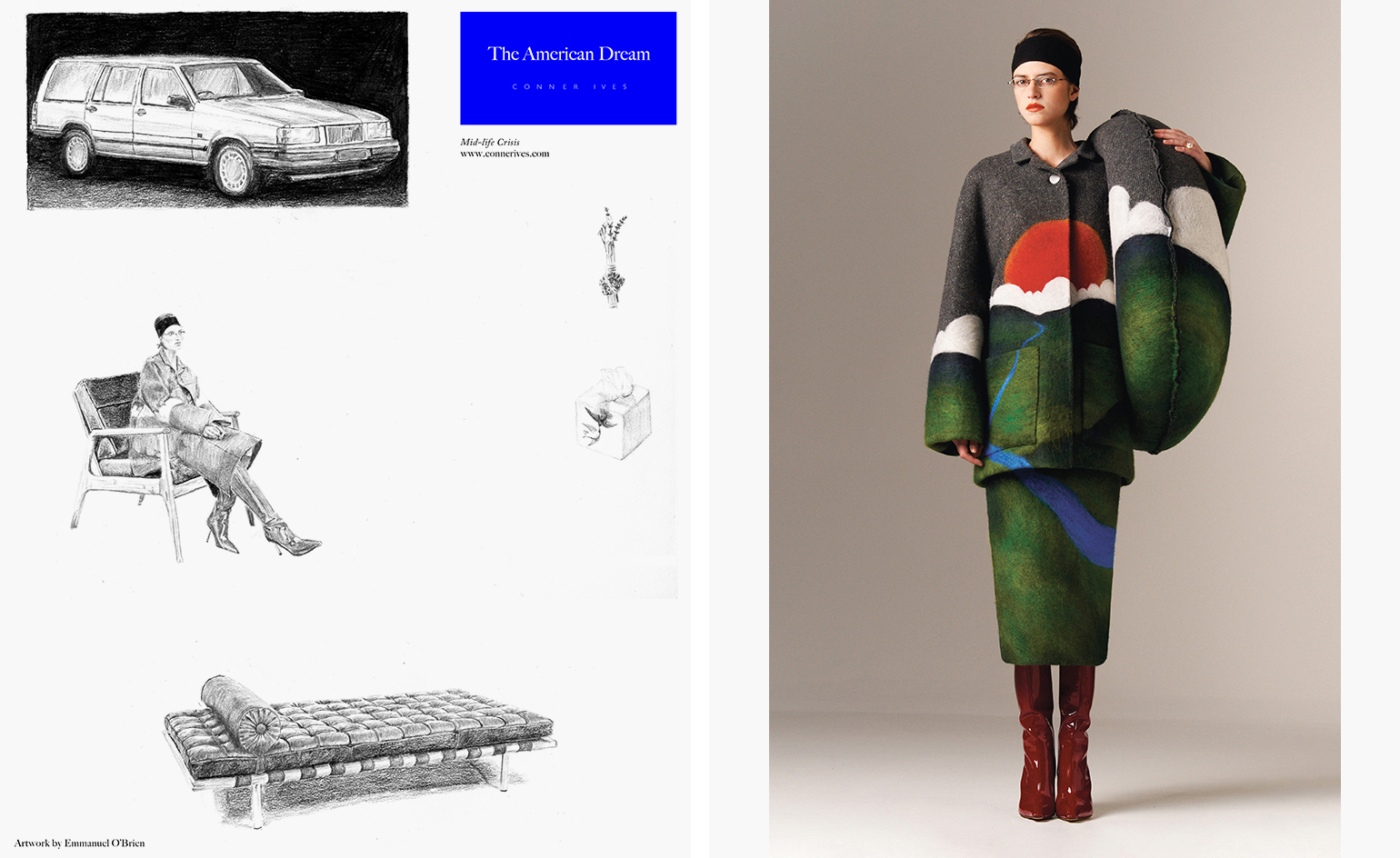
When fashion wunderkind Conner Ives was considering how to publicise his A/W 2021 collection – an offering titled ‘The American Dream’, which serves up playful and cleverly characterised female archetypes he encountered growing up in Bedford, New York, like ‘The LA Crystal Girl’, ‘The Social Swan' and ‘The High-schooler’ – he wasn’t overly inspired by contemporary visual advertisements, which are splashed across the pages of glossy magazines, across vast billboards in major cities, or as Sponsored posts on social media.
‘I was looking at illustrated Dior advertisements of mainly shoes from the 1950s,’ Ives explains on Zoom, via the office of his London studio. ‘I felt like illustrations would be more suited to telling the stories behind my collection’, he adds. The result is a series of detailed pencil drawings, created by art director and long time friend of Ives, Emmanuel O’Brien, that spearhead the storytelling behind the designer’s autumn offering, which despite commemorating the fourth season of his eponymous, Rihanna-loved brand, is also his graduate BA Central Saint Martins collection.
In the wake of bipartisan politics, racism-fuelled riots and the storming of the United States Capitol, the concept of the American Dream and its ability to exist today, is a prescient topic. ‘The American experience is unique, but it's so digested in pop culture. There are so many archetypes people could identity with,' Ives says. Today, his visual characters, in bubble-shaped ballgowns, sequin halternecks and foulard silk head scarves, allow us to consider the socio-political narratives and stylistic traits we've bought into, where they lie today, and what they lack.
For Ives' A/W 2021 collection's opening look, ‘The 9 to 5 working Girl', featuring a folkloric skirt suit with a New Age rising sun motif, paired with rimless glasses and hair slicked back with an elastic hair band, the designer took style cues from his mother. ‘I was thinking about a woman in the middle of her life and the breadwinner in her family,' he explains. Through a pencil sketch which took 12 hours to create, O’Brien evolved this matriarchal archetype, drawing a conventionally surburban Volvo Estate – the car Ives' mother used to drive – alongside a vase of flowers, a box of tissues and a leather chaise longue – objects commonly associated with a psychiatrist's office.
‘She's probably in therapy,' Ives says. ‘We're highlighting these dialogues which aren't stated, but are obvious'. For O'Brien, who grew up in Spain, it was also fascinating sketching objects so associated with American liberation. ‘In the US, the car is such a symbol of freedom,' he says, drawn to objects which are mundane, but almost insidious in their banality.
Conner Ives on The American Dream
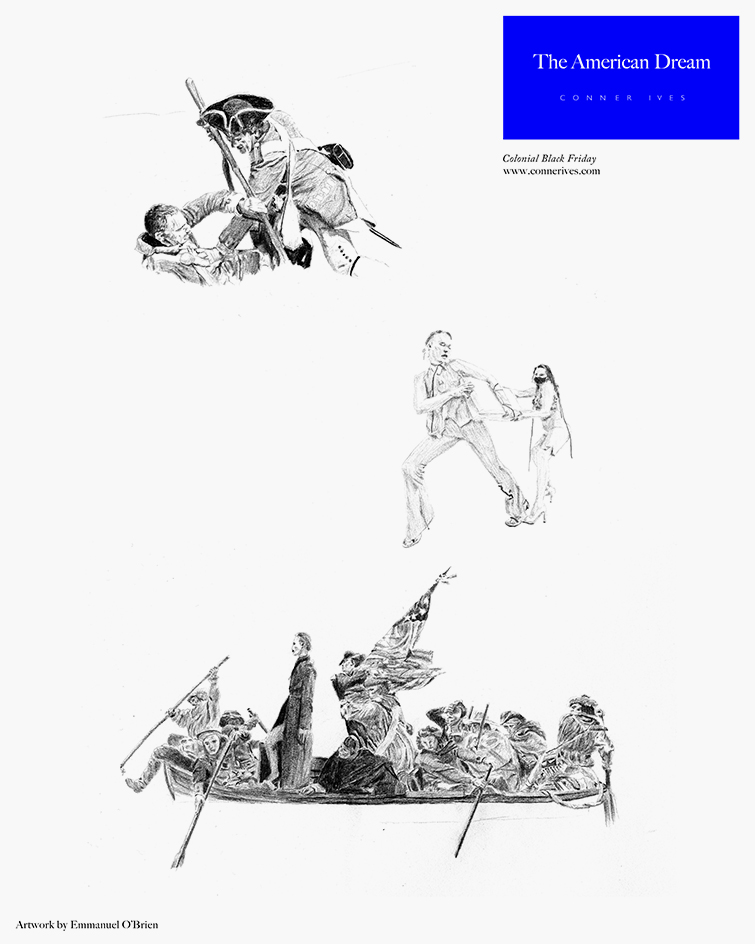
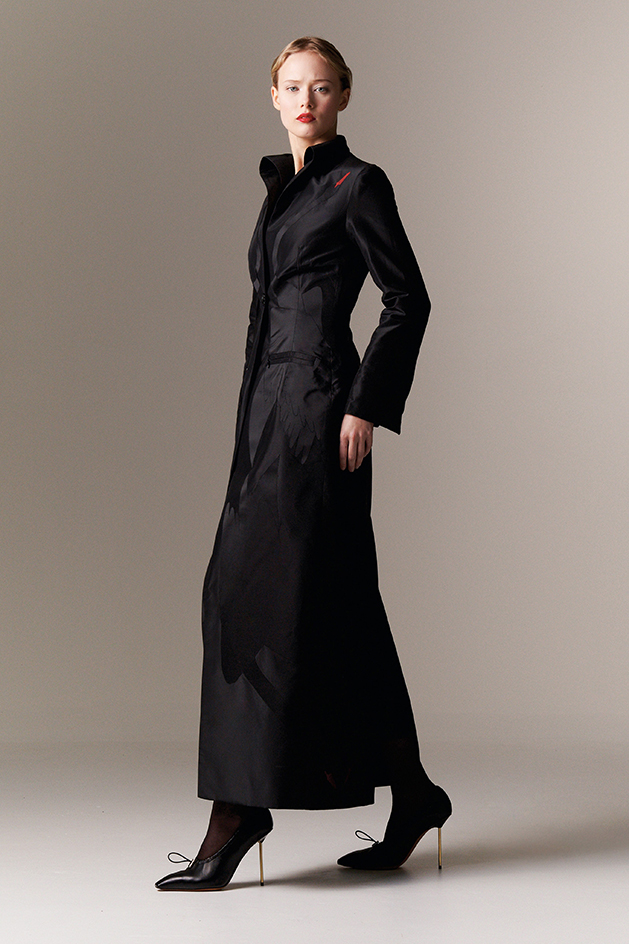
Top, ‘Colonial Black Friday,’ by Emmanuel O’Brien. Above, ‘The Social Swan’, by Conner Ives
‘The Social Swan', 'The High-schooler' and ‘The Theatre Girl', clad in varsity-centric yoga trousers, fluro elastic cycling shorts and a smart silk coat and spiky stiletto heels, feature in the tongue-in-cheek illustration ‘Colonial Black Friday', one which draws from both the 1851 oil painting Washington Crossing the Delaware, alluding to a scene from the American Revolutionary War and images of fighting that occur at the heavily discounted busiest shopping day of the year. ‘The Social Swan', an allusion to Carolyn Bessette-Kennedy, a nostalgic symbol of Nineties minimalist style and supreme social status whose image today is emblazoned across magazine Style pages, inspires fashion collections and floods Instagram accounts, replaces George Washington, steering the ship of capitalism, as others battle around her. ‘We're fighting over televisions. There's no better way to depict The American Dream than that,' Ives says.
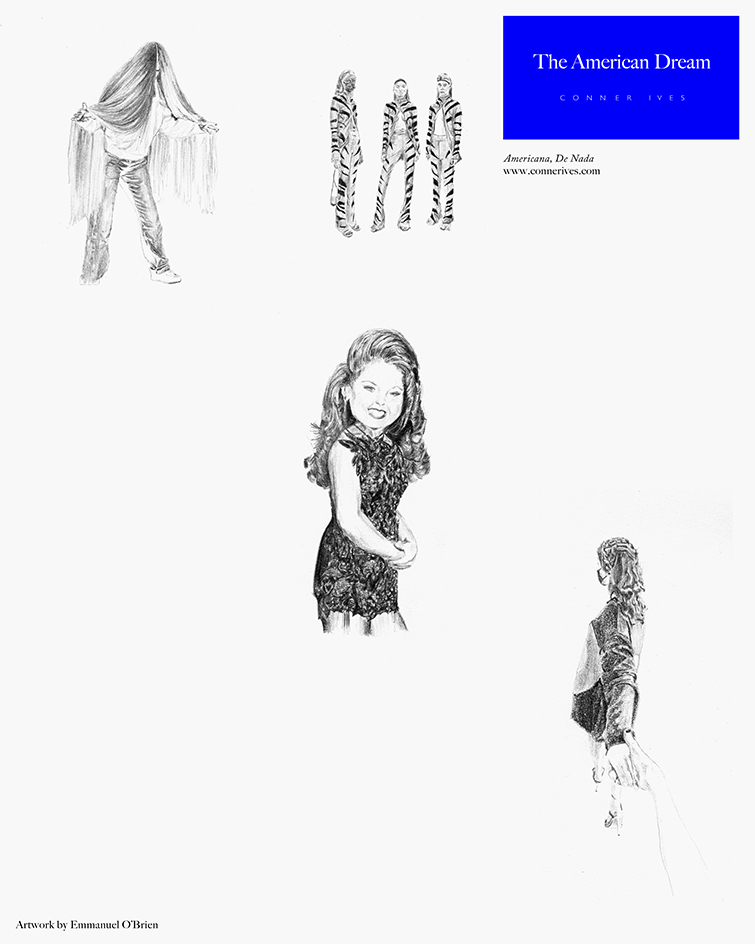
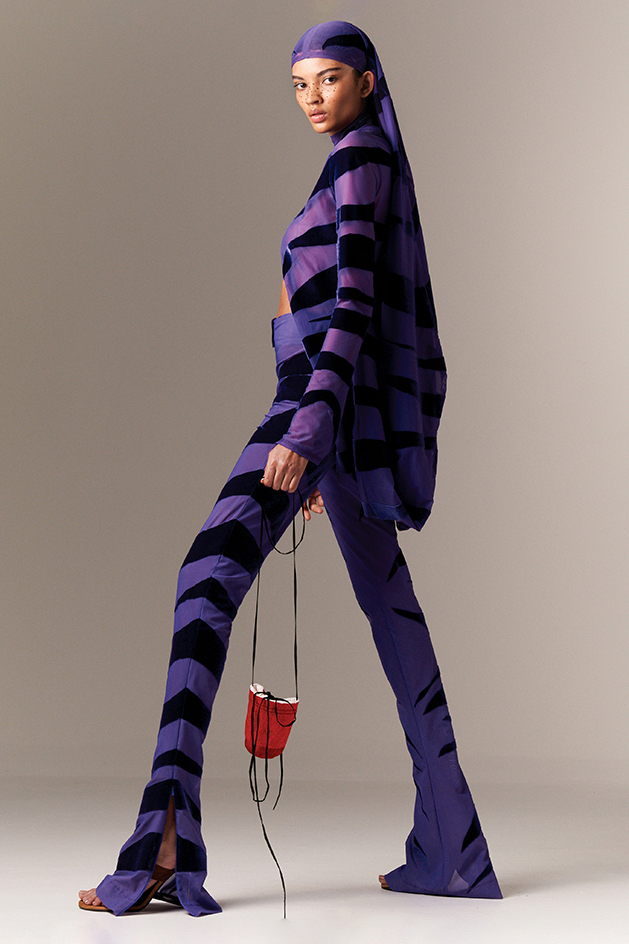
Top, ‘Americana Da Nada,’ by Emmanuel O’Brien. Above, ‘The Dance Team Girl’, by Conner Ives
For Ives and O'Brien, it was important to work in pencil, a ubiquitous medium that we can all identify with experimenting and working with in some way, whether drawing as children or participating in art classes. ‘It's a humble medium to work in,' Ives says. ‘The illustrations hark back to a different, slower time, adding a second layer to the collection that really deal in nuance. You need to zoom out from the archetypes to understand their story.'
For O'Brien, it was intriguing considering the mythic elements that play into both his and Ives' conception of The United States, as a native and a tourist, a participant and a bystander. ‘It was interesting for us both to play off our presumptions and biases,' he says. ‘Thinking about the fantasy and the reality'. What's more symbolic of The American Dream?
INFORMATION
Wallpaper* Newsletter
Receive our daily digest of inspiration, escapism and design stories from around the world direct to your inbox.
-
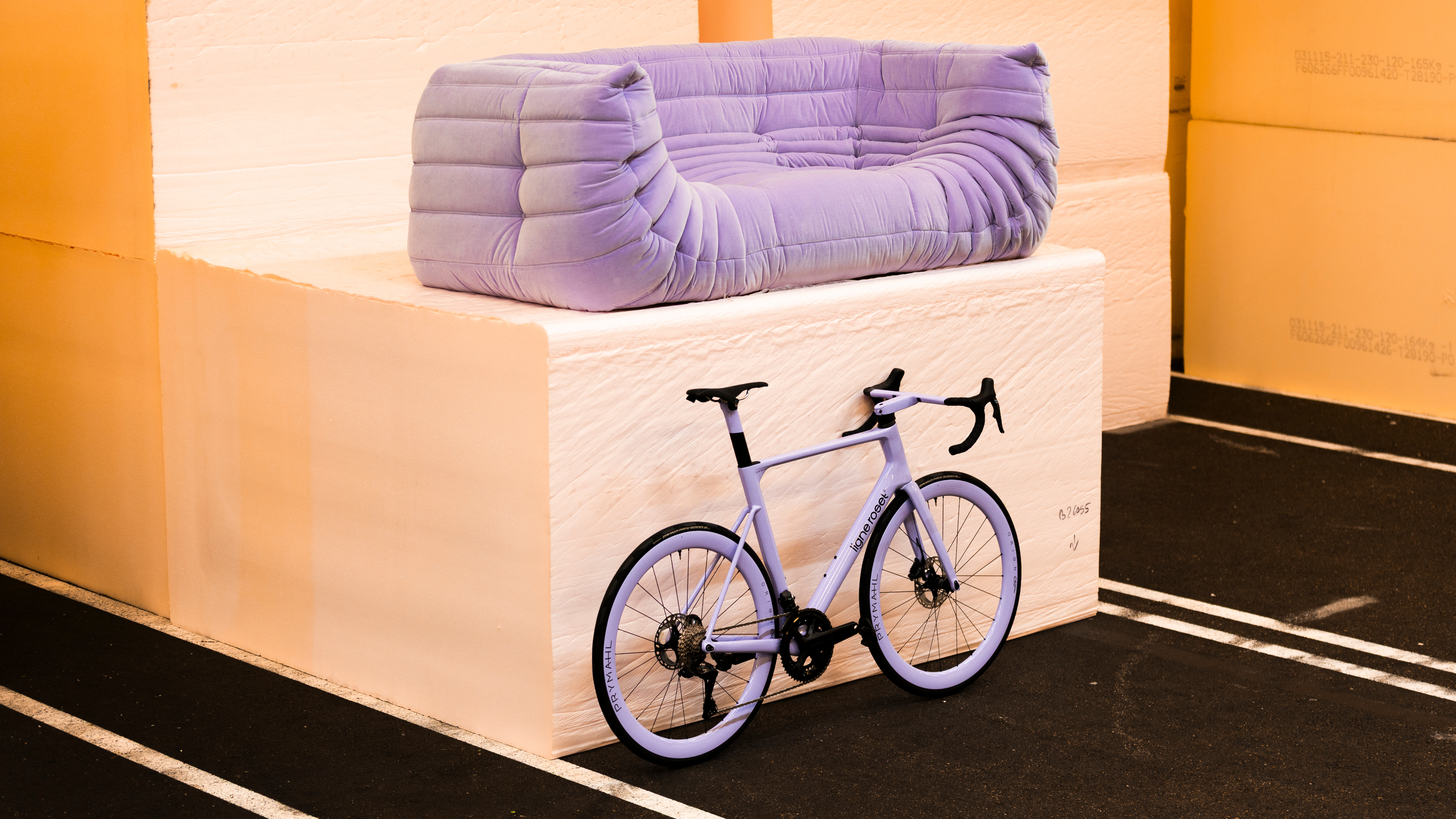 Ligne Roset teams up with Origine to create an ultra-limited-edition bike
Ligne Roset teams up with Origine to create an ultra-limited-edition bikeThe Ligne Roset x Origine bike marks the first venture from this collaboration between two major French manufacturers, each a leader in its field
By Jonathan Bell
-
 The Subaru Forester is the definition of unpretentious automotive design
The Subaru Forester is the definition of unpretentious automotive designIt’s not exactly king of the crossovers, but the Subaru Forester e-Boxer is reliable, practical and great for keeping a low profile
By Jonathan Bell
-
 Sotheby’s is auctioning a rare Frank Lloyd Wright lamp – and it could fetch $5 million
Sotheby’s is auctioning a rare Frank Lloyd Wright lamp – and it could fetch $5 millionThe architect's ‘Double-Pedestal’ lamp, which was designed for the Dana House in 1903, is hitting the auction block 13 May at Sotheby's.
By Anna Solomon
-
 Donald Robertson’s gaffer tape butterflies flit to Weekend Max Mara
Donald Robertson’s gaffer tape butterflies flit to Weekend Max MaraDonald Robertson – famed American illustrator – creates figurative winged creatures for Weekend Max Mara's S/S 2021 collection
By Laura Hawkins
-
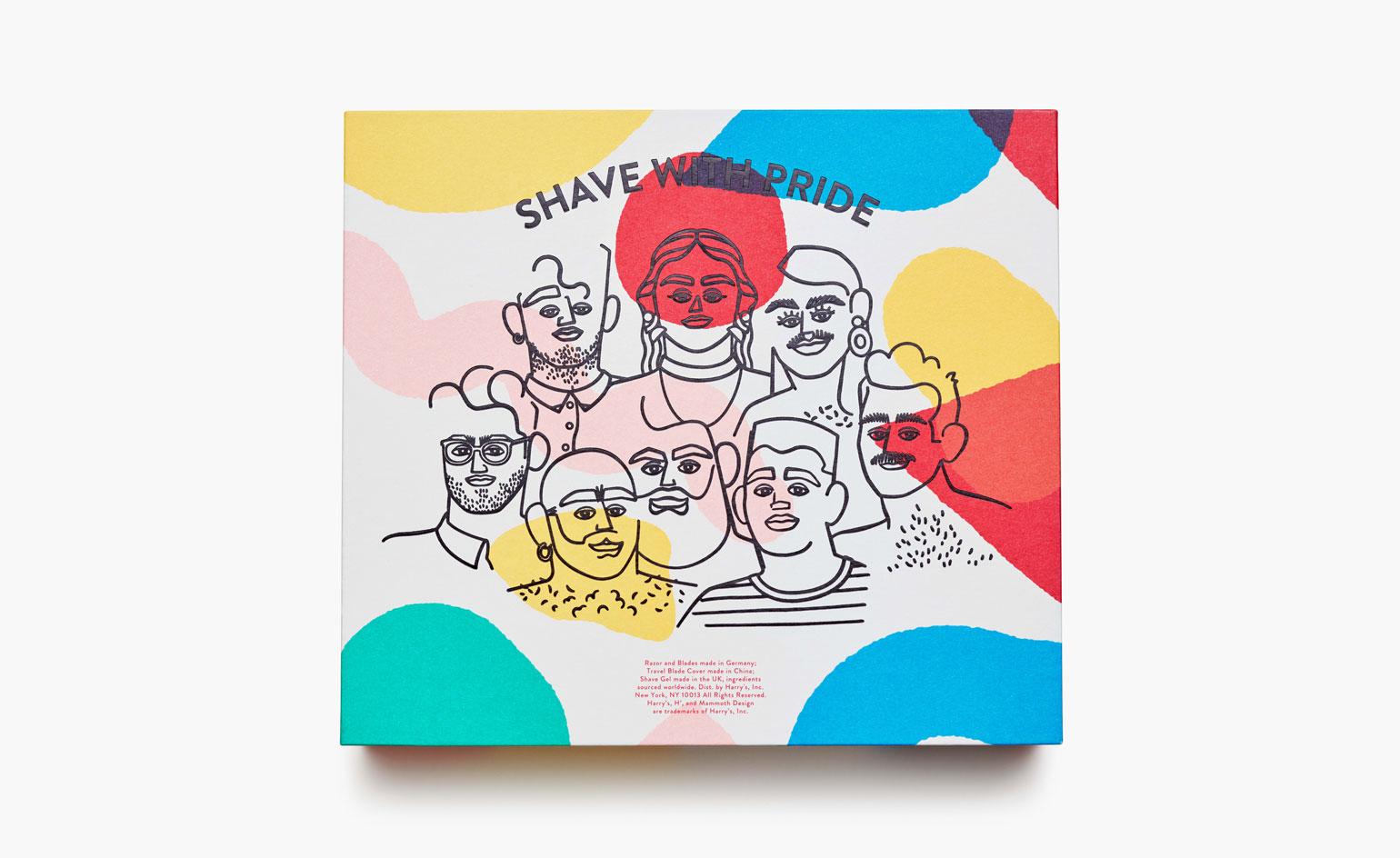 José Roda’s drag illustrations celebrate Pride with Harry’s
José Roda’s drag illustrations celebrate Pride with Harry’sBy Elly Parsons
-
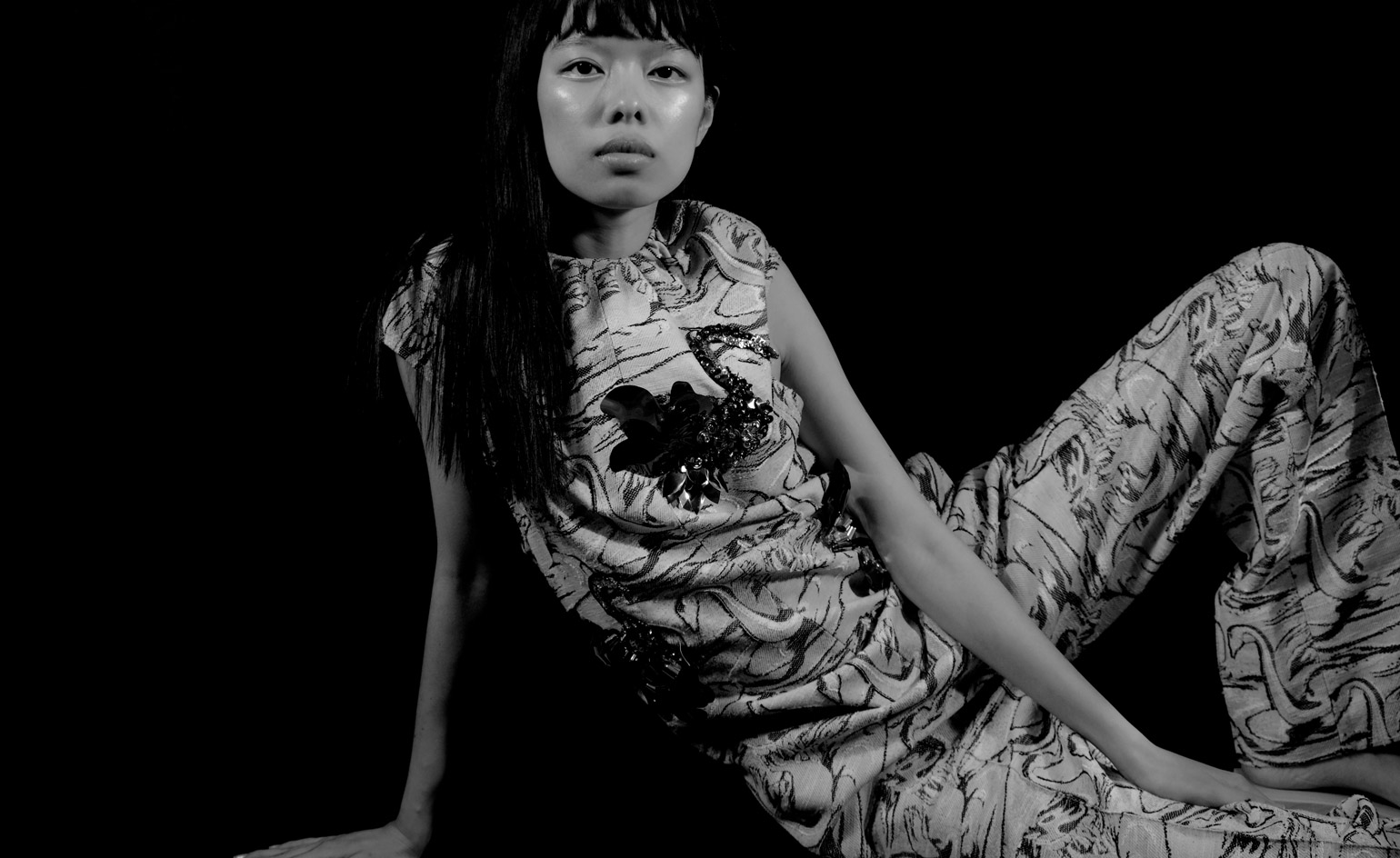 Sharpen your pencils: we lay our hands on these illustrated pieces
Sharpen your pencils: we lay our hands on these illustrated piecesPrint and patterns are lightening up our looks to welcome the sunny season. But it’s not all about florals anymore. Designers are getting hands-on with crafty touches and illustrations that will give an artful twist to any garment. From sharp pencil strokes to soft paintbrush lines, labels are using clothes as a canvas to bring wearable art into our wardrobe this spring
By Morgane Nyfeler
-
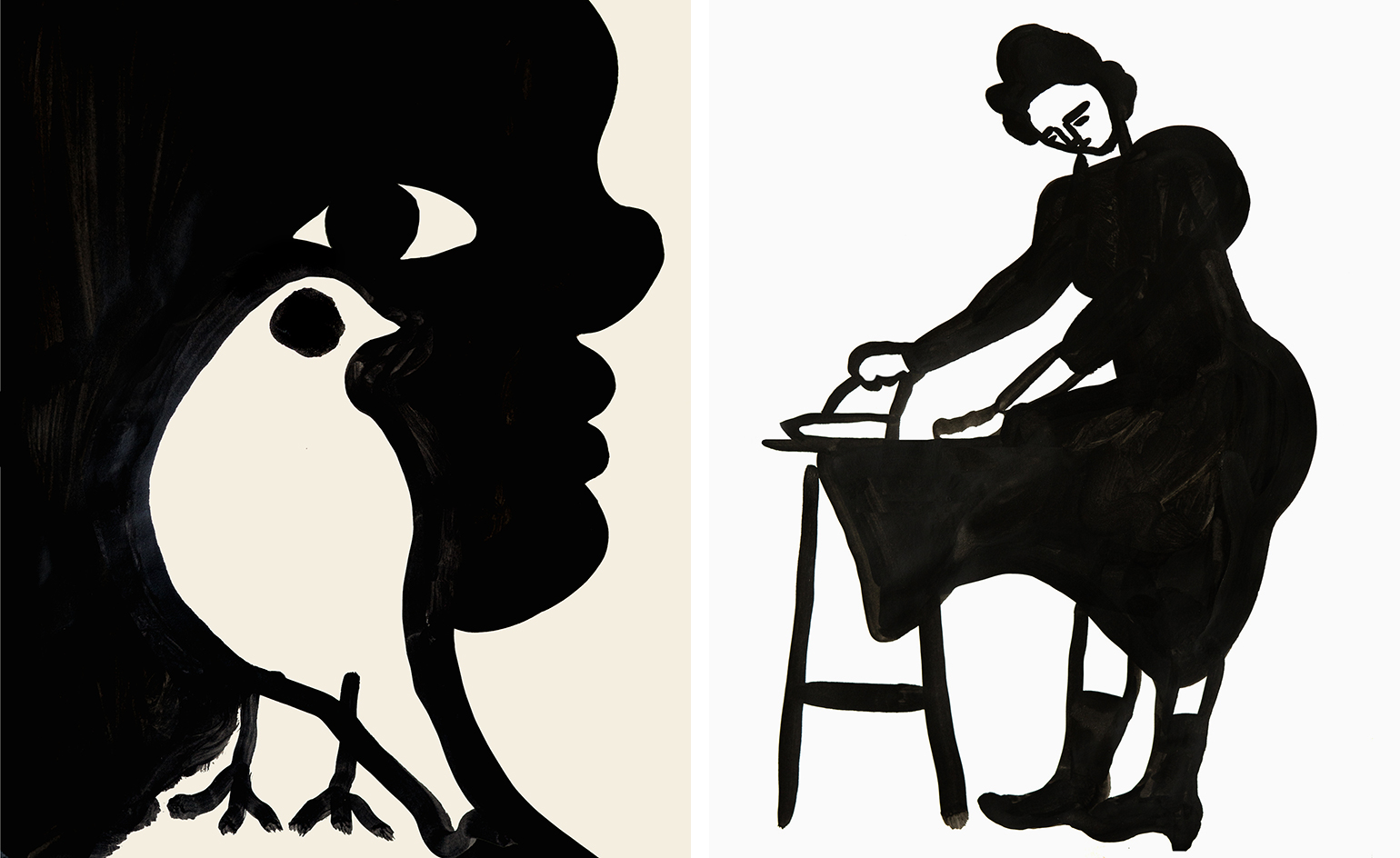 The illustrative ingenuity of Christina Zimpel
The illustrative ingenuity of Christina ZimpelBy Grace Cook
-
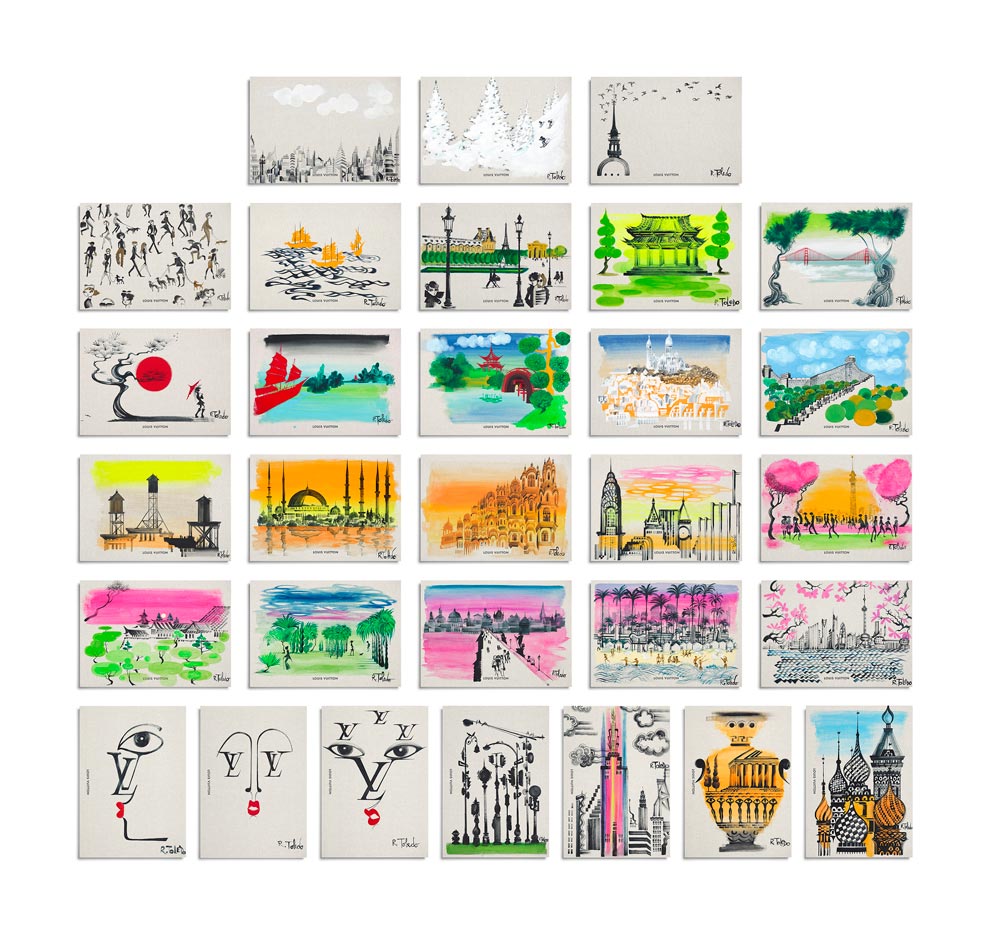 City whimsy: Ruben Toledo’s limited edition portfolios for Louis Vuitton
City whimsy: Ruben Toledo’s limited edition portfolios for Louis VuittonBy Catherine Shaw